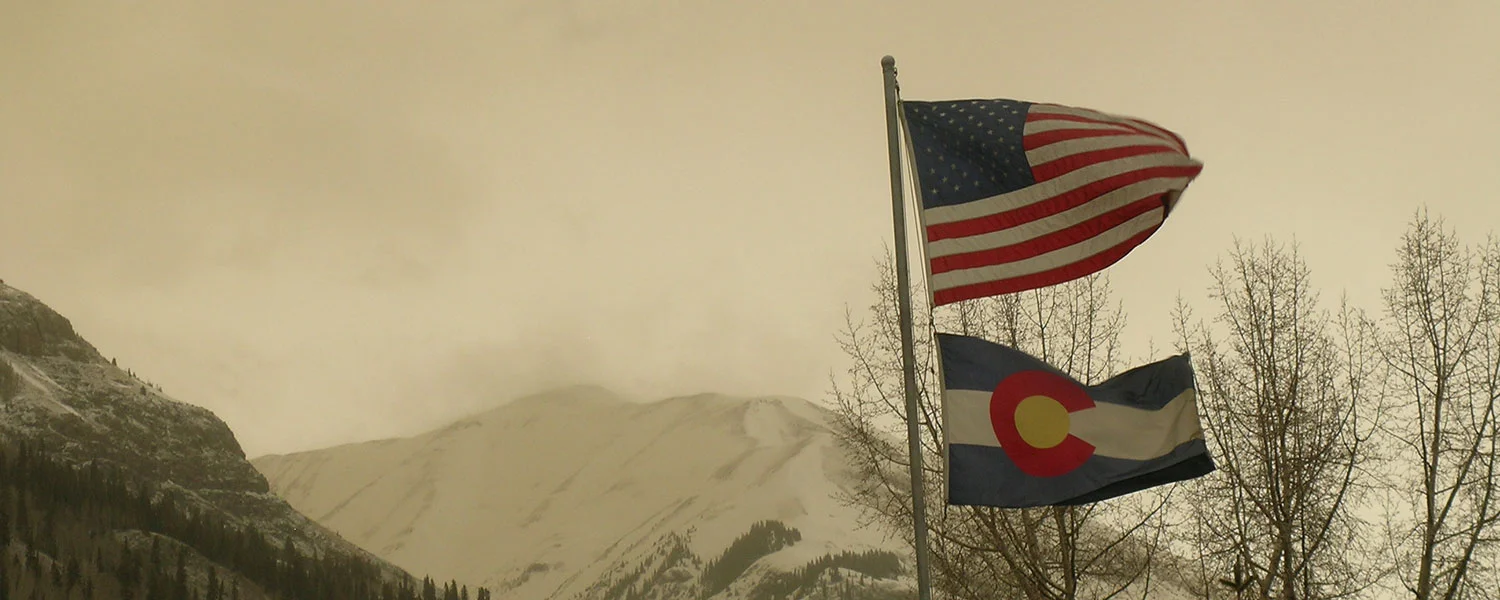SUMMARY
Final CODOS visits were conducted at Hoosier, Loveland, Berthoud, Willow Creek, Rabbit Ears, and McClure Pass sites on June 16 and 17, and Independence Pass was also visited on June 15. Merged but comparatively weak dust-on-snow was observed at the snowpack surface in all locales, producing an incremental but still meaningful reduction in snow albedo and absorbing solar radiation, but other sources of energy had driven the snowmelt energy budget until recently. Dust samples were collected at Independence, Loveland, and Berthoud Pass sites. Very high streamflows were observed in these watersheds. A discussion of the pattern and high amplitude of recent statewide snowmelt behavior is presented.
DUST-ON-SNOW CONDITIONS
As CODOS program participants know, no additional dust-on-snow events were observed by CODOS at the Senator Beck Basin (SBB) sentry site since the D3-WY2015 event of April 14/15 (see Dust Log). The total WY 2015 mass of mineral dust deposited to-date at the Swamp Angel Study Plot in SBB, from events D1 (April 2), D2 (April 8) and D3 (April 14/15), is 2.048 grams per square meter (2 g/m2), a small fraction of the dust depositions observed in prior seasons (see Mass Loading Data). As such, WY 2015 dust intensity at SBB and throughout the state ranked as comparatively minimal (i.e., MIN Dust) within the CODOS period of record and within the Dust Enhanced Runoff Classification scheme.
During this CODOS circuit, dust event layers D3, and perhaps D2 and D1 (where present) were observed merged in a single layer at the snowpack surface on all aspects and at all elevations. Viewed from a distance, most remaining snowcover appeared ‘clean’, although not as clean as seen during May, when new snow repeatedly restored very high snow albedo throughout the Colorado mountains. However, closer inspection revealed that this merged dust at the surface was darkening the snow surface and producing a comparatively minor reduction in albedo. While not as dramatic as in prior years, this incremental reduction in albedo was enhancing the radiative forcing of snowmelt, adding additional absorbed solar energy to the snowmelt energy budget.
“All layers merged” (ALM) samples of this dust were collected at Independence Pass, near the summit of Loveland Pass, and at the Berthoud Summit CODOS site (see photos below). These ALM samples were sent to our USGS collaborators for chemical and other analyses, for inter-site comparison. ALM samples were not collected at Hoosier Pass, Willow Creek Pass, Rabbit Ears Pass, and McClure Pass due to lack of snow at or near the CODOS site.





















